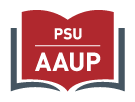The Chronicle of Higher Education
By Courtney Kueppers
February 11, 2016
Today’s college freshmen are more likely to participate in a student-led protest than each of the nearly five decades of classes that preceded them, according to survey results released on Thursday. That includes the college freshmen of the late 1960s and early 70s, an era storied for its on-campus political activism.
Nearly one in 10 freshmen said there was a very good chance they would participate in a protest in college, according to the annual Freshman Survey by the Cooperative Institutional Research Program, part of the Higher Education Research Institute at the University of California at Los Angeles.
The racial unrest in recent years — including police shootings nationwide and protests on college campuses — has clearly made a mark on students’ psyches. Among black students, 16 percent said they were very likely to demonstrate while in college. But students of all races reported being more likely to demonstrate than just a year before.
A report on the survey, "The American Freshman: National Norms Fall 2015," is based on responses from 141,189 first-time, full-time freshmen at 199 four-year colleges and universities in the United States.
Below are five takeaways about the behaviors and beliefs of today’s freshman class.
1. Students’ heightened interest in political activism could make them a force in this year’s elections (and it’s likely to be on the left).
Sixty percent of freshmen surveyed said there was "a very good chance" they would vote in a federal, state, or local election while in college. That’s up nearly 10 percentage points from 2014 (though it’s worth noting that in 2014 a heated presidential campaign was not underway).
And when they get to the polls, they are likely to vote for candidates on the left. Thirty-four percent identify as "liberal" or "far left," a share similar to the figure in 2008, which was the highest since 1973. About 22 percent of respondents identify as "conservative" or "far right." That figure is down from about 26 percent of students in 2006.
Not only do students plan to vote, but they also have a desire to bring about change. When it comes to influencing the political structure, 33 percent of black students saw it as a "very important" or "essential" life objective, compared with 27 percent of Latinos and 20 percent of white students.
2. Pell Grants are vital for students, but they’re not enough, especially for women.
For the first time, the survey included questions about Pell Grants, the bedrock piece of federal financial aid for low-income students.
The vast majority of students without Pell Grants (73 percent) said they relied on family resources to pay at least part of their first-year bills, but just 32 percent of Pell Grant recipients did the same.
And they worry about making ends meet. Eighty-four percent of Pell Grant recipients reported concern about paying for college, compared with 57 percent of nonrecipients.
Women are more concerned about paying for college than men are, especially women at historically black colleges, where 79 percent of women said they had "some" or "major" concerns about paying for school.
3. LGBTQ students more frequently feel overwhelmed and depressed.
Just 25 percent of students who identify their sexual orientation as lesbian, gay, bisexual, or "other" rate their emotional health as "above average" or in the "highest 10 percent," compared with 53 percent of heterosexual students. (For the first time in the survey’s history, students could identify their sexual orientation and indicate if they are transgender.)
About 46 percent of students who identified as queer said they frequently felt depressed, compared with 8 percent of heterosexual students.
Among all students, about 10 percent reported feeling frequently depressed, a figure virtually unchanged from the year before.
4. On pace with societal trends, students continue to be less likely to affiliate with a specific religion.
This was the first year that students were given the option to select agnostic or atheist as affiliations. Nearly 30 percent of incoming freshmen said they were agnostic, atheist, or "none." The percentage of students identifying with a specific religion stands at 71 percent.
Asian students are the least likely of the survey’s racial and ethnic groups to affiliate with a particular religion, while black students are by far the most likely — at 86 percent, at least 10 percentage points higher than any other group.
Queer students are more likely than their peers to identify as agnostic or atheist.
5. More than ever, students are paying attention to the job outlook and grad-school admissions in their undergraduate search.
Job outlook has always been an important factor in students’ college choices, and it continues to become more so. This year 60 percent of students, an all-time high, said whether a college’s graduates land good jobs was a "very important" consideration in choosing a school.
Over all, 38 percent of students said they considered grad-school admissions when choosing an undergraduate destination, indicating steady aspirations for advanced degrees.
Additionally, nearly 70 percent of students say it is "very important" that their school of choice has a "good academic reputation."
